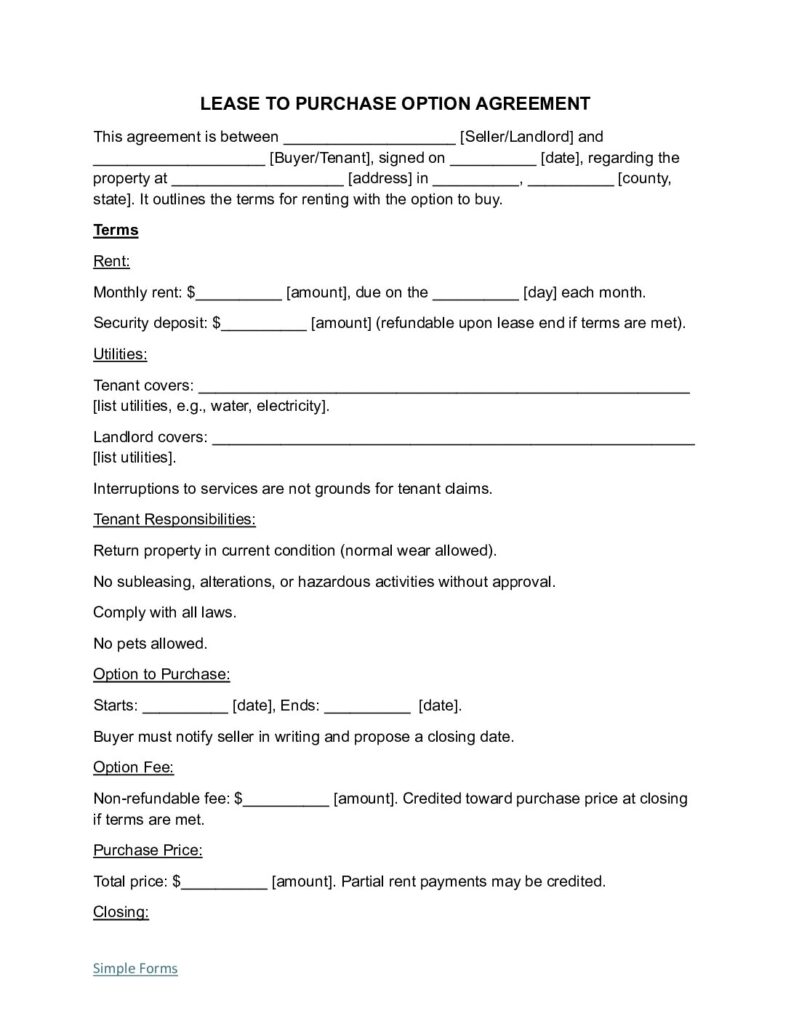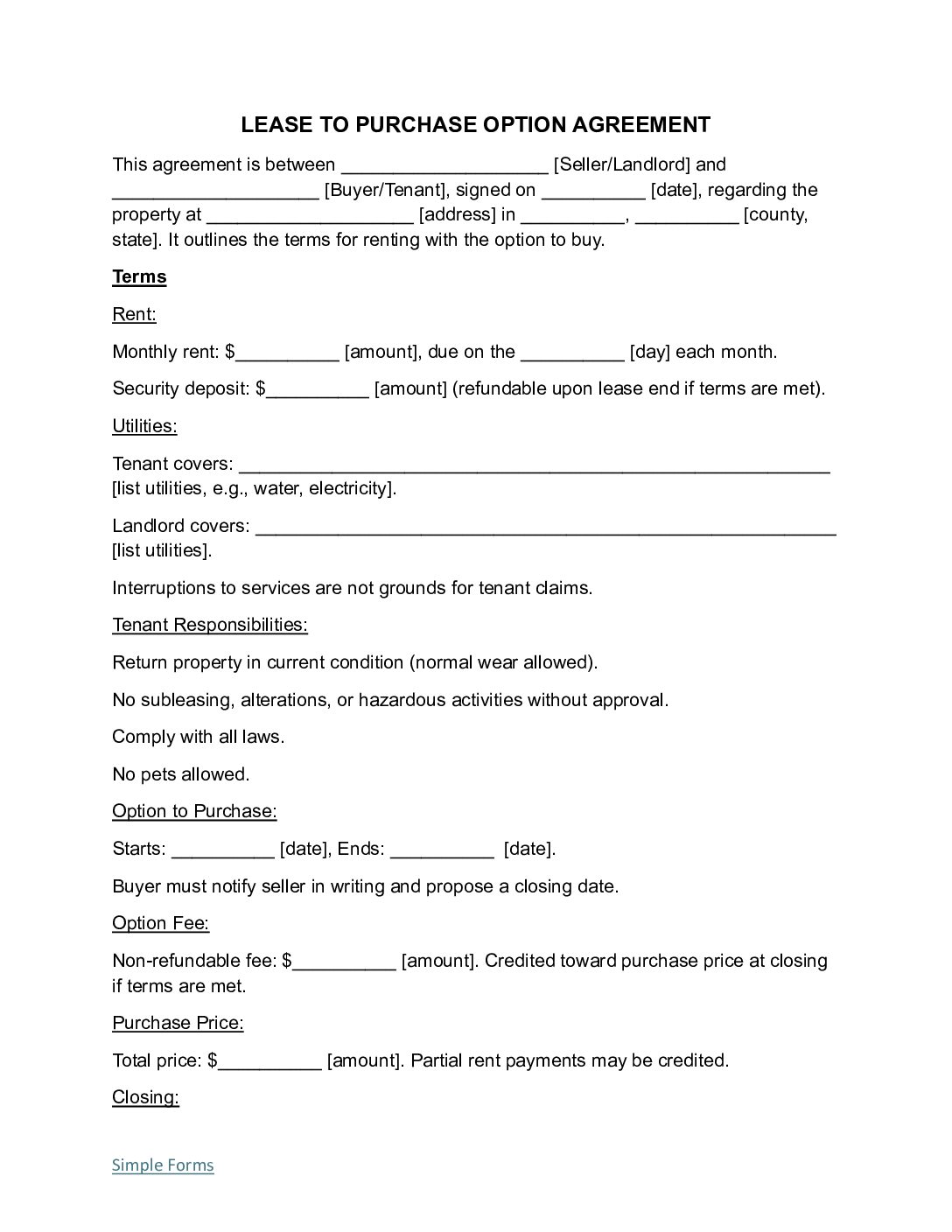By Type (2)
There are two types of lease-to-own agreement templates:
- Option to Purchase: The tenant can choose to buy the property at any time during the lease period.
- Lease-Purchase: The tenant must buy the property by the end of the lease period, usually at a predetermined price.
By State
- Alabama
- Alaska
- Arizona
- Arkansas
- California
- Connecticut
- Delaware
- Florida
- Georgia
- Hawaii
- Idaho
- Illinois
- Indiana
- Iowa
- Kansas
- Louisiana
- Maine
- Maryland
- Massachusetts
- Michigan
- Minnesota
- Mississippi
- Missouri
- Montana
- Nebraska
- New Hampshire
- New Mexico
- New York
- North Carolina
- North Dakota
- Ohio
- Oklahoma
- Oregon
- Pennsylvania
- Rhode Island
- South Carolina
- Texas
- Washington D.C.
Lease-to-Own Agreement Process Steps
Negotiate the Rental Terms
Landlord and tenant must agree on the following in a lease to own agreement:
- Monthly Rent Amount
- Lease Term (Start and End Dates)
- Security Deposit (if any)
- Utilities and Services
The Option to Purchase Terms
After finalizing rental terms, decide:
- Purchase Price
- Downpayment
- Option Term
- Option Fee (if any)
The lease-purchase terms often include a condition that both parties agree to enter a purchase agreement in “good faith.”
Screen the Tenant
- Screen the tenant with a credit, background, and criminal checks using services like MySmartMove.com or RentPrep.com.
- Check for sex offender status (nsopw.gov)
Verify Tenant Income
The tenant provides:
- Bank Statements (last 2-3 months)
- Pay Stubs (last 2 weeks)
- Tax Returns (last 2 years)
- Employment Verification
Sign the Lease with Purchase Option
Both parties sign the agreement. Tenant provides:
- First Month’s Rent
- Security Deposit
- Prorated Rent (if applicable)
- Additional Fees (pet fees)
Tenant Moves In
Tenant moves in per the lease start date, introduces themselves to neighbors, and follows property rules.
Activate Purchase Option
Enter a Purchase Agreement
Parties agree on:
- Financing Contingency
- Inspection Periods
- Repair Negotiations
- Property Survey
- Closing Date
Include Required Disclosures
Close the Sale
Closing the sale includes the following:
- Making sure the Buyer funds are available, transfers payment, and receives the deed.
- The deed is recorded at the county office, officially transferring ownership.

